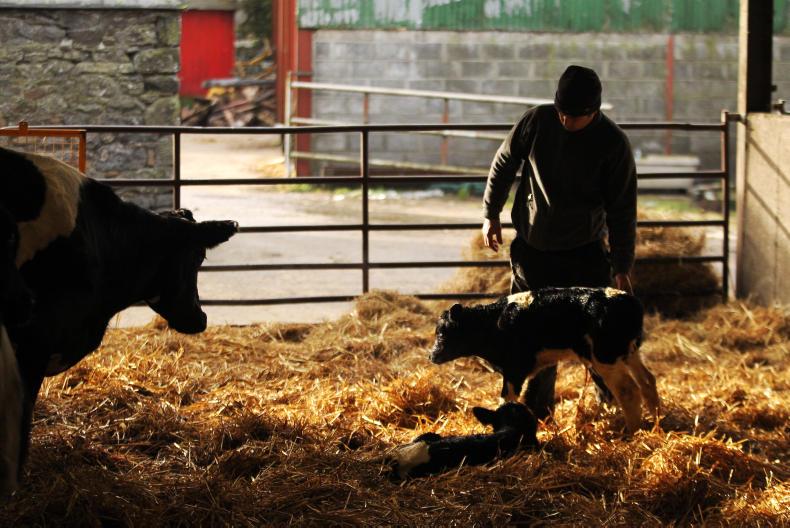Calving is progressing very well on the farm this spring. We have almost 82% of the herd calved over the last five weeks and should get close to 90% calved after six weeks.
Most of the surplus bull calves have been moved off farm already to keep labour under control and we will start selling surplus heifer calves from now on as well.
The demand for bull calves has been strong enough again this year, with most of ours selling for €150 before two weeks of age. It’s a welcome boost to cashflow while we wait for the milk production season to get fully under way.
We try to get a batch together every two weeks and get them away as quickly as possible. The bull calf numbers have been running slightly ahead of heifers all spring, which is leaving us plenty to sell.
The cows have been out full-time for most of February but the forecast for this weekend looks rough, so we may have to revert to cubicles and silage for a few days or nights.
We are slightly ahead of the target of 30% of the farm grazed in February anyway, so slowing things down for a couple of days won’t be the end of the world. Some damage has been done around gaps, but with some on-off grazing we’ve avoided anything that will hit grass production for the rest of the year.
At the moment, the cows are milking 25l and just over 1.9kg solids on 5kg of concentrate. We made an extra effort with the cell count this year by pre-foaming the cows and wiping this off before milking.
The cell count is now down at 48,000, with plenty of mature cows in the herd. We will continue with this programme for morning milkings only from now until breeding starts. Hopefully, the good start will follow through across the rest of the year.
Glanbia is preparing another major shake-up in the structure of the businesses over the year ahead. The plan this time is to bring the consumer foods and the agritrading businesses under the umbrella of the co-op a bit more.
For the last number of years, liquid milk suppliers have been effectively supplying liquid milk to Glanbia plc and surplus manufacturing milk to Glanbia Ingredients Ireland. This leads to complicated and confusing statements, which are never good for farmer-co-op relations.
We have also seen the co-op give trading rebates to members who have bought feed and fertiliser from the plc.
The intention of this rebate is to assist co-op members’ cashflow but, in effect, it gives the plc an advantage in terms of competitiveness in the marketplace. At least if the co-op takes majority ownership of this division, the supports would make a lot more sense.
The proposal also makes an allowance for another milk price support fund to be created.
We have seen the value of this over the last few years and will probably see it again soon enough.
Another share spin-out is again the sweetener in the deal to get it over the line.
While the spin-out and the price support fund are nice bonuses to get from the proposal, the main business is getting all the Irish milk suppliers in the Glanbia area back supplying the one entity and getting the agri-trading division back into co-op ownership.
At least then when we buy a litre of Avonmore, a pack of Dubliner cheese or a tonne of feed or fertiliser we can feel like we’re supporting our own business once again.






 This is a subscriber-only article
This is a subscriber-only article










SHARING OPTIONS: